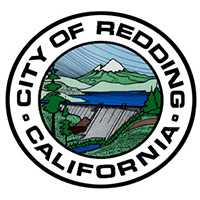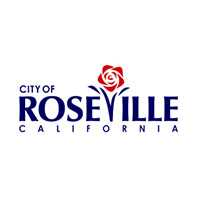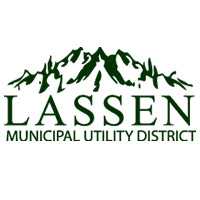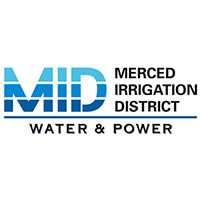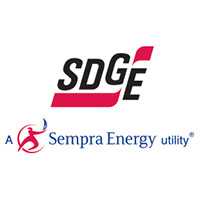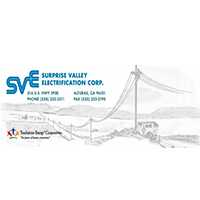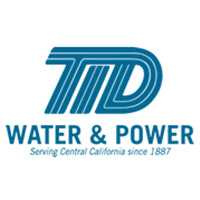See how much it will cost to install solar panels for your home in California


Our estimates used by





Solar power in California
Last fact-checked on March 12, 2020, by Jame Bond-James Bond
California is one of the best places in the nation to install solar panels. A combination of high average sun exposure, expensive utility rates, the solar tax credit, and the state’s net metering law means homeowners can get an excellent return by installing solar panels on their homes.
The Golden State also has some of the most aggressive greenhouse gas emission goals in the nation. California’s renewable portfolio standard requires utilities to derive 60% of their retail electricity from renewable sources by 2030.
Compare solar quotes from the top solar companies in California
California solar power facts
$3.75 watt
Average cost: 5kW solar power system
?7 Years 4 Months
Average payback time
$104,106
Average lifetime savings
?6¢ kWh
Levelized cost of solar energy
32¢ kWh
If you don't get solar
?17,802 kWh
Annual power production
Cash flow graph based on cash purchase of a 11.78kW system
This 11.78kW system would offset 100% of your energy usage if your typical monthly bill in California is $270, however, your situation may vary so try our solar calculator to get a result tailored to you.
39
Solar companies in California that provide pricing through the Solar-Estimate marketplace.
How much can solar panels save you in California
Average total cost of solar panel installation in California
| System Size | Cash purchase After 30% solar tax credit |
Financed purchase After 30% solar tax credit |
|---|---|---|
| 3kw | $8,337 | $9,004 |
| 4kw | $10,808 | $11,673 |
| 5kw | $13,125 | $14,175 |
| 6kw | $15,246 | $16,466 |
| 7kw | $17,248 | $18,628 |
| 8kw | $19,096 | $20,624 |
| 9kw | $20,727 | $22,385 |
| 10kw | $22,260 | $24,041 |
How much do solar panels cost in California?
$3.75 per watt
Cash purchased solar system
Before 26% solar tax credit
$4.17 per watt
Financed solar system
Before 26% solar tax credit
$17.3¢ /kWh
Lease/PPA
Ave 15 year term, 2.5% price escalator
What are the pros and cons of installing solar panels in California?
The biggest advantages in California for installing solar panels are the 1-for-1 net metering law and the 26% federal tax credit. California also offers a variety financing options and incentive programs for low-income households.
SolarPowerRocks provides a great breakdown of solar incentives and policy for each state within the US.
There are not many disadvantages to installing solar panels in California. If you’re a California homeowner, you’ll be kicking yourself that you didn’t get solar while all of these incentives were still around.
Enter your details to calculate the cost and savings you are likely to get from installing solar panels for your home.
Best solar companies in California
Find local city information
Find local information for cities in California
Compare solar quotes from the top solar companies in California
How much electricity will solar panels produce in California
Solar panels produce different amounts of energy in different locations.
Around the Los Angeles area solar panels installed on a south-facing 29-degree pitch roof will typically produce:
1,550kWh
per year per 1kW of peak DC
(direct current) capacity
For more information about how your location, roof direction, and roof tilt affects solar power production use the solar panels calculator and enter your zip code.
I want to buy a solar panel kit and install it myself
What rebates, solar tax credits and other solar incentives are available in California
What solar incentives and tax credits are available in California?
The two main incentives to install solar in California are the 26% federal solar tax credit and the net metering law.
Many upfront utility-based incentives that were established under the California Solar Initiative are now exhausted for residential customers and are nearly exhausted for commercial customers.
However, the case for investing in solar has never been stronger due to reductions in the price of solar systems helping to compensate for the lack of some upfront rebates.
Net metering in California (NEM 2.0)
Since 1996, utility companies in California have been required by the California Public Utilities Commission to offer full 1-to-1 net metering (NEM) to their customers. This means that utilities are required to give you the full retail value for each unit of solar power you personally generate and send back into the grid.
In 2016, California instituted NEM 2.0. NEM 2.0 brought three main changes to the previous NEM policy:
- Paying interconnection fees;
- A change to nonbypassable charges; and
- Requiring the use of time of use (TOU) rates.
Interconnection fees
Previously, customers were exempt from interconnection fees. Under NEM 2.0, utilities set a standard mandatory interconnection fee.
Interconnection Fees for Investor-Owned Utilities
| Utility | Systems 1 MW or smaller | System greater than 1 MW |
|---|---|---|
| Pacific Gas & Electric | $145 | Total cost of interconnection |
| Southern California Edison | $75 | $800 |
| San Diego Gas & Electric | $132 |
$800 |
Nonbypassable charges
NEM 2.0 requires nonbypassable charges to be paid on each kWh of energy a customer consumes from the grid (about $0.03 per kWh) at a metered interval determined by your utility. When you purchase electricity from the grid, you will be billed the retail rate of electricity plus the total nonbypassable charges. When you export to the grid, you will be credited at the retail rate, not including the nonbypassable charges. So, you can apply the credits you earn to future energy usage from the grid, but you will still pay nonbypassable charges on the kWh you consumed from the grid.
Example:
Let’s say you have 3 kWh credits. From 2:00 PM to 3:00 PM, you use 5 kWh, but your system only produces 2 kWh. This means you consumed 3 kWh from the grid. You will be charged on your bill for nonbypassable charges on the 3 kWh you consumed from the grid. But, because you had 3 kWh credits, you will not be charged for the electricity charges.
Time of use rates
The final big change of NEM 2.0 is the transition to TOU rates. Customers using TOU rates pay different rates for electricity based on the time of day. Utilities provide a default TOU rate that customers will be put on, but other rate plans may be available. Check your local utility’s website for the best TOU rate for you.
Property Assessed Clean Energy (PACE) Loan Program
California has taken advantage of PACE loan programs to meet their emission targets. These loans are paid back through an increase in your property taxes and are attached to the property, not the property owner. So, if you get a PACE loan and decide to move, the loan stays with the property and the next property owner will continue to pay off the loan. This is a great option if you want to go solar but aren’t sure how long you will be staying in your current house.
California is home to CaliforniaFIRST, the largest PACE program in the US.
PACE loans are also available through the HERO program.
Property tax exemption
California homeowners can now save on their property taxes with the installation of residential solar systems. Typically, having a solar system on your property would increase your property taxes, however The Property Tax Exclusion for Solar Energy Systems exemps 100% of the assessed value of a solar system from residential property taxes.
What is the payback period for installing solar panels in California?
The payback period for installing solar panels in California is usually between 4 and 8 years. This is dependent on the size of the system, the brand of solar panels you buy, the amount you were previously paying for power, and whether you lease or buy the system.
This represents an excellent low-risk investment.
California Solar Calculator
Regardless of what you want to know about the economics of installing solar panels for your home or business in California, we have a solar calculator that can show you exactly the information you require.
What you can find out about installing solar panels in California using our full monthly solar calculator
This solar calculator requires you to input your address, utility company, your average monthly power spend - It tells you:
- What size solar system do you need?
- Answers the question of how many solar panels do I need?
- How many square feet of roof space you need for solar panels
- Solar electricity production in annual kWh (kilowatt-hours) you can expect from your solar system in California
- The value of solar tax credits and other incentives you are entitled to based on the estimated size of system you need, your location and your utility provider.
- Likely cost based on an average of prices charged for solar systems of that size in the last year in California or Los Angeles ;
- The likely payback period on your solar panels and your investment return.
- Your total lifetime solar savings based on each of the major solar finance options, a cash purchase, a cash purchase funded with a HELOC sol (home equity line of credit) and a zero-down PPA or third party lease product.
If you want to see all of the above but also see live pricing, the three best solar deals available in your city and get binding quotes from each of these solar companies then use this California solar panels calculator. This calculator requires you to also input your name and contact details because most of our 200+ installer partners will only authorize the sharing of their live solar pricing where we have validated that you are a real homeowner with a home in their service area. We respect the privacy of your data and only share your contact details with the solar companies you ask us to get binding quotes from.
Going solar in California
Check out all of the ways energy providers of California can help you be more energy-efficient and save money.
The following programs are available:
| Incentive Name | Eligibility | Type |
|---|---|---|
| Residential Renewable Energy Tax Credit | Federal | Personal Tax Credit |
| Property Tax Exclusion for Solar Energy Systems | State | Property Tax Incentive |
| Sonoma County - Energy Independence Program | Local | PACE Financing |
| NEM 2.0 | State | Net Metering |
| California Solar Initiative - Single-Family Affordable Solar Housing (SASH) Program | State | Low-Income Program |
| Self-Generation Incentive Program | State | Battery Rebate |
| City of San Francisco - Low-Income Solar Energy Incentive Program | City | Low-Income Program |
| LADWP - Net Metering | Utility | Net Metering |
| Silicon Valley Power - Solar Electric Buy Down Program | Utility | Rebate Program |
| SMUD - PV Residential Retrofit Buy-Down | Utility | Rebate Program |
| Ukiah Utilities - PV Buydown Program - Closed | Utility | Rebate Program |
| LADWP - Solar Incentive Program | Utility | Rebate Program |
Find your local rebates and incentives
Your city may have further incentives to offer. Please keep in mind that the best source of up-to-date information on incentives is the solar installers who specialize in your area.

















